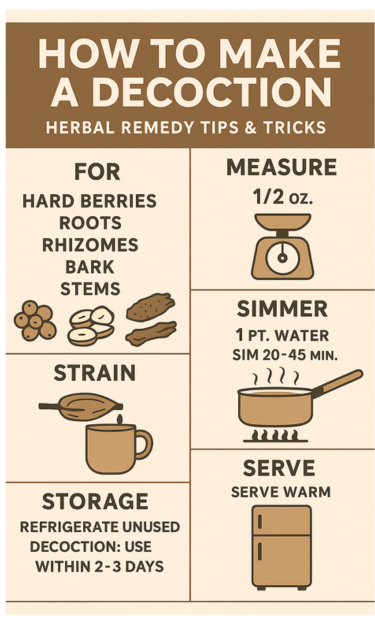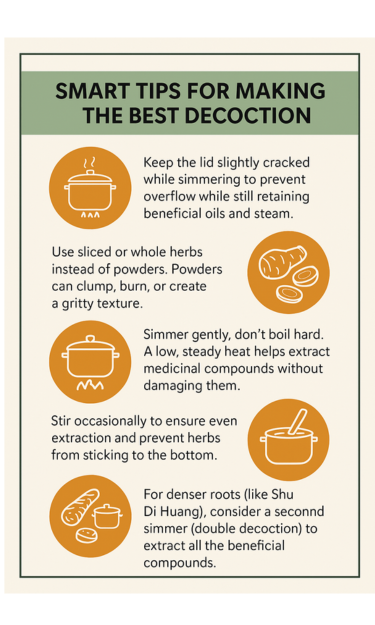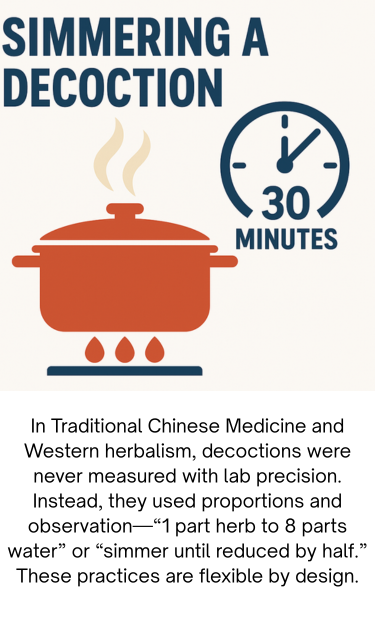

NuHerbs Lab Tested
Andrographis Herb (Chuan Xin Lian) - Cut Form 1 lb. - Nuherbs
Herbal Information for Andrographis Herb in Cut Form
Author: Sarah Aries, Holistic Herbalist
Read Time: 7 minutes - approximently
 What Is a Decoction?
What Is a Decoction?A decoction is a time-honored method used in herbal medicine, particularly prominent in Traditional Chinese Medicine (TCM) and Ayurvedic practices. This preparation technique is especially beneficial for extracting the healing properties of tougher plant materials, such as roots, bark, rhizomes, stems, and hard berries.
1. The Process of Decoction The decoction process begins with the selection of the appropriate herbal ingredients, typically those known for their potent therapeutic potentials, such as ginseng root, licorice root, or cinnamon bark. The chosen plant materials are then coarsely chopped or crushed to maximize the surface area exposed to water.
Simmering: The preparation involves placing the chopped herbal materials into a pot of water and gently bringing it to a simmer. It is critical to allow the mixture to simmer rather than boil vigorously. Simmering helps prevent the destruction of delicate compounds and allows for a gradual release of the herbs' medicinal properties.
Duration: The simmering time can vary depending on the toughness of the materials. While softer herbs may require only a few minutes, harder materials often need to be simmered for anywhere from 20 minutes to several hours. This slow cooking process ensures that the active constituents are effectively drawn out.
Straining: Once the decoction is complete, the mixture is then strained through a fine mesh or cheesecloth to remove the solid plant materials, resulting in a concentrated liquid that retains the healing properties of the herbs.
2. Why Decoctions? Decoctions stand apart from other herbal preparation methods, such as infusions, due to the amounts of time and heat applied to the plant materials. Infusions work well for delicate floral and leaf parts that contain volatile oils, while decoctions are essential for extracting deeper constituents from tougher plant parts.
3. Applications of Decoctions Decoctions are widely utilized in herbal medicine owing to their effectiveness in extracting the beneficial properties of harder plant materials.
Healing Potency: Herbalists often prefer decoctions for creating remedies intended to address chronic conditions, where robust therapeutic action is desired. For example, a decoction made from astragalus and angelica root might be prescribed to strengthen the immune system or combat fatigue.
Culinary Uses: Beyond medicinal applications, decoctions can also play a role in culinary practices. Some cultures use decocted herbs in cooking broths or soups to impart flavors while simultaneously enriching the dish nutritionally.
4. Conclusion In summary, decoctions are a vital aspect of traditional herbal preparations, specifically designed to harness the potent healing properties embedded in robust plant materials. They require careful attention to simmering times and techniques to ensure that the full spectrum of beneficial constituents is extracted. By understanding how to make and utilize decoctions, one can tap into the ancient wisdom of herbal medicine and enhance overall wellness through these potent herbal solutions. Whether used for healing purposes or culinary delights, decoctions offer an effective means to unlock the therapeutic potential of nature's pharmacy.
Here are examples of situations when a decoction should be used:
When Using Hard Plant Parts: Decoctions are ideal for extracting beneficial compounds from tougher materials such as roots, barks, rhizomes, and seeds that have dense cellular structures.
For Chronic Conditions: Decoctions are often employed in treating chronic health issues where prolonged extraction is necessary to draw out potent medicinal properties.
When Requiring Stronger Extraction: Use decoctions when you need to extract deeper constituents like alkaloids, tannins, and polysaccharides, which typically require longer simmering times to release their benefits.
For Formulating Herbal Remedies: When creating concentrated herbal remedies intended for serious health concerns, decoctions provide a robust solution due to their thorough extraction capabilities.
In Combination with Other Herbs: Decoctions are useful when combining multiple hard herbs that require significant boiling times to ensure that all active compounds are successfully drawn out.
For Digestive Health: Often utilized for digestive remedies, decoctions can help extract properties from herbs like dandelion root or ginger, which manage digestive issues effectively.
To Maximize Health Benefits: If the goal is to create an herbal preparation with maximized therapeutic benefits, especially for longstanding ailments, a decoction is the preferred method.
Use a decoction when preparing any of the following:
Roots (e.g., Astragalus, Shu Di Huang)
Bark (e.g., Cinnamon, Magnolia)
Rhizomes (e.g., Ginger, Turmeric)
Hard Berries (e.g., Schisandra, Gardenia)
Woody Stems (e.g., Bamboo, Horsetail)
These herbs won't release full potency in a quick tea or cold brew. Decocting ensures you extract what your body actually needs.
Fatigued and need immune support? Astragalus root decoction helps build lasting energy.
Digestive sluggishness? Bai Zhu and ginger decoction can gently warm and regulate.
Sleep support? Combine Shu Di Huang with Zizyphus in a slow simmer.
Post-viral recovery? Gardenia berry and honeysuckle decoctions are traditional detoxifiers.
Herbs: Select the appropriate hard plant materials, such as roots, barks, rhizomes, or seeds, that you wish to use.
Water: Fresh, clean water is essential for the decoction process. Use enough to ensure that the herbal materials are fully submerged.
Cooking Equipment: A pot or saucepan suitable for simmering is necessary. A lid can also be helpful to maintain heat and moisture.
Bonus Tip: Do not use aluminum saucepan.
Measuring Tools: Use measuring spoons or a kitchen scale to accurately measure your herbs.
Strainer: A fine mesh strainer or cheesecloth will be needed to separate the liquid from the solid herb materials after cooking.
Heat Source: A stovetop or another means to apply heat for simmering the decoction.
Storage Container: A glass jar or bottle to hold the finished decoction for later use.
| Herb Type | Dried Herb | Water Amount |
|---|---|---|
| Roots/Bark | 1 oz (~28g) | 2–3 cups (16–24 oz) |
| Rhizomes/Berries | 1 oz (~28g) | 3 cups (24 oz) |
Why Are Decoction Water Ratios Approximate and Not Exact?
That’s a great question! The reason decoction water ratios are given as approximate is because several variables affect how much water you’ll actually need during the simmering process. These include:
1. Herb Density and Texture
Some herbs (like Astragalus root or Shu Di Huang) absorb more water or expand more during decoction than lighter herbs like licorice. The same amount of water behaves differently depending on the herb's properties.
2. Evaporation Rate
Water loss during decoction depends on your pot size, how much of the lid is left uncovered, your stove’s heat level, and how long you simmer. That means even if you start with the same amount of water, you could end up with more or less liquid depending on your setup.
3. Desired Potency
Some people like stronger decoctions (more herb to less water), while others prefer milder ones. Adjusting slightly based on preference is common and totally safe with most herbs.
4. Traditional Herbal Wisdom
In Traditional Chinese Medicine and Western herbalism, decoctions were never measured with lab precision. Instead, they used proportions and observation—“1 part herb to 8 parts water” or “simmer until reduced by half.” These practices are flexible by design.
Add 1–2 tbsp dried sliced herbs per 1 cup cold water in a pot.
Turn heat to medium-high until a rolling boil is reached.
Reduce heat to low. Cover partially and simmer for:
Roots/Bark: 30–45 minutes
Rhizomes: 25–35 minutes
Hard Berries: 20–30 minutes
Strain while hot. Pour into glass jar or mug. Refrigerate for up to 3 days.
Rewarm gently on stove. Avoid microwaving.
 Tips for Success
Tips for SuccessKeep the lid slightly cracked while simmering to prevent overflow while still retaining beneficial oils and steam.
Use sliced or whole herbs instead of powders. Powders can clump, burn, or create a gritty texture.
Simmer gently, don’t boil hard. A low, steady heat helps extract medicinal compounds without damaging them.
Stir occasionally to ensure even extraction and prevent herbs from sticking to the bottom.
For denser roots (like Shu Di Huang), consider a second simmer (double decoction) to extract all the beneficial compounds.
Using powdered herbs (turns sludgy)
Leaving pot uncovered (causes loss of volume)
Improper storage (plastic can leach)
Overcrowding with too many herbs at once
| Method | Best For | Time | Strength | Shelf Life |
| Decoction | Roots, Bark, Berries | 30–45 min | Medium-Strong | 2–3 days fridge |
| Infusion | Leaves, Flowers | 5–10 min | Mild | 1–2 days fridge |
| Tincture | All herbs | 2–8 weeks | Very Strong | 1+ year shelf |
Yes, but be strategic. Combine herbs with similar boil times (e.g., Astragalus + Reishi). If mixing soft herbs (like mint or chamomile), add them after simmering for just the last 5 minutes.
| Herb Name | Decoction Time | Notes |
| Astragalus Root | 30–45 min | Immunity, energy |
| Shu Di Huang | 40 min | Sticky; may need double decoction |
| Bai Zhu | 30 min | Digestion, fluid metabolism |
| Gardenia Berries | 20–25 min | Crush before decocting |
| Ginger Rhizome | 25 min | Digestive warmth, circulation |
| Cinnamon Bark | 20 min | Antimicrobial, warming |
Refrigerate decoctions in glass jars up to 3 days
You can freeze in silicone ice cube trays for up to 2 months
Never store in plastic
Q: Can I use a slow cooker?
A: Yes. Add herbs and cold water, set to low, and decoct for 4–6 hours.
Q: Can I sweeten my decoction?
A: Yes. Add honey or monk fruit after straining and cooling slightly.
Q: Are decoctions safe for kids or pregnant women?
A: Always consult a professional. Some herbs are contraindicated during pregnancy.
Q: Can I reuse the herbs (marc)?
A: Yes. For strong herbs like Shu Di Huang, a second boil is traditional.
 Want Ready-to-Simmer Herbs?
Want Ready-to-Simmer Herbs?We make it easy.
Shop sliced Astragalus, Shu Di Huang, and Bai Zhu
GMP-Certified
Lab-Tested
Perfect for your next batch
Explore Decoction-Ready Herbs → 1stChineseHerbs.com